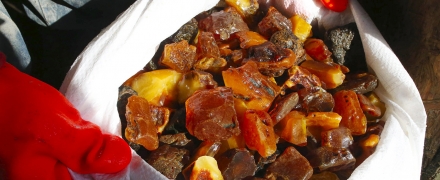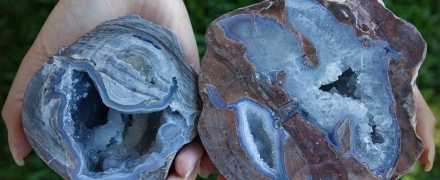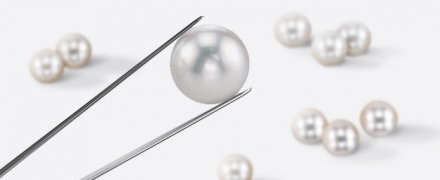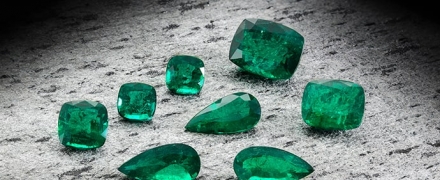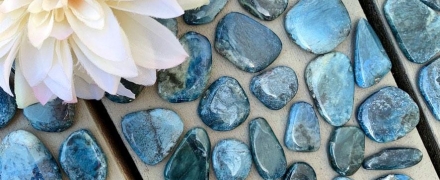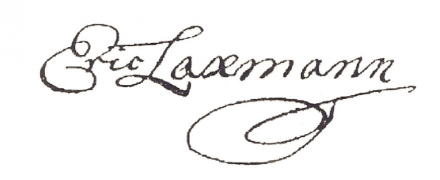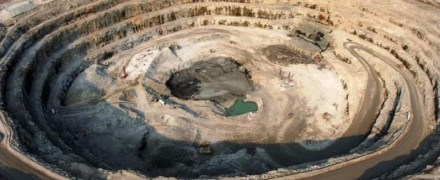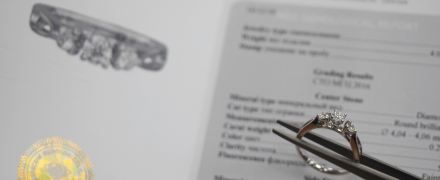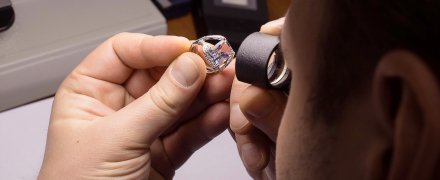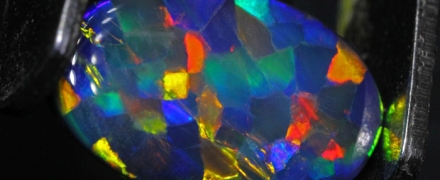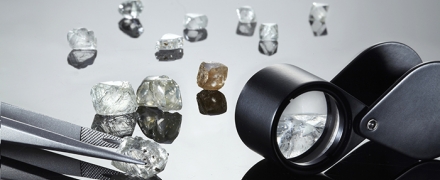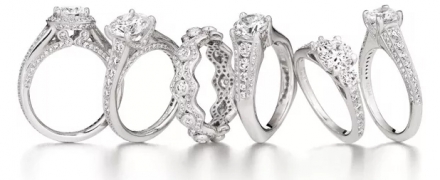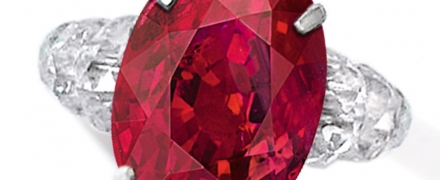open 10 am - 7 pm
laboratory is closed
Amber and Fossil Resins
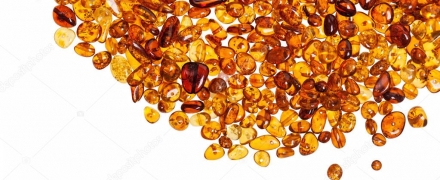
In Russian, the term “amber” is borrowed from Lithuanian from “gintãras” - the name of lithified resin fossils from the coast of the Baltic Sea. Historically, the term refers only to succinite and gedano-succinite. Currently, in Russian-language gemological mineralogy, the term “amber” refers to lithified lithified amber-like resins (department of amber-like resins, in the classification of 2014 Martirosyan OV [Martirosyan Olga Vladimirovna] using materials from Uspensky VA, Orlova N.A. and Anderson KB, Winans RE, Botto RE).
In English-speaking countries, the term “amber”, usually translated as “amber”, has a broader definition, including all ancient fossil resins suitable for use in jewelry (both “brittle” and “viscous”), that is, amber-like and retinite-like resins , including benzo (benzoin, represented by zigburgite), krancite and fossil digs. The term "amber" does not define modern resins - benzo and digging. However, in the classification adopted abroad (Anderson & Crelling [1995], Anderson & Botto [1993], Bray & Anderson [2009], Wolfe et al. [2009], Rust et al. [2010] and Poulin & Helwig [2012] ) classes are distinguished, among which the first two subclasses of the first class unconditionally correspond to the term “amber”, the remaining subclasses of the first class and the second class are highly likely to correspond to the term amber, but brittle resins can also fall into this group. Fossil resins of the third to fifth classes do not correspond to the concepts of “amber”, “amber-like” and “retinite-like” resin, but are the so-called “immature” resins.
Our laboratory adheres to a scientific approach to the classification of fossil resins, taking into account the prevailing commercial nomenclature in gemology. However, sharing the point of view of Russian mineralogists, we use the English term “amber” to identify fossil resins with a clarifying wording to the classification family (succinite, rumenite, oxysmol, retinite), and where possible in jewelry, to the species (succinite, hedano-succinite, romanite, simetite, birmit, straufit, beckerite, stantinite, hedanite, glessite, valhovit, retinit, than avinit). We classify “immature” fossil resins as - Siegburgite, Copalite, including Copal and Hartite instead of Krantzite.
Any significant deposits of amber have an age of resin formation from the Triassic period (for the simetites of the northern part of the island of Sicily) to the Neogene (for the birmitas of Indochina and Burma). The predominant amount of amber has an age of gum formation, estimated as paleogene. Fossils of Permian age are also known, but their findings are of only mineralogical importance.
The most likely producers of fossilized fossilized resins are coniferous (Pinóphyta or Coníferae) families of plants: Pine (Pinaceae), Sciadopityaceae (Sciadopityaceae), Cypress (Cupressaceae), Araucariaceae (Araucariaceae); and the family of the Flowering class of Dicotyledons: Dipterocarpaceae (Dipterocarpaceae), Legumes (Fabacea), Bursaceous (Burseraceae), Hamamelis (Hamamelidaceae). Moreover, most amber-like resins are usually associated with conifers. The main producer of amber-forming resin in the Baltic-Dnieper amber sub-province was the pine fossil coniferous family: Pinus succinifera pine (amber pine) and Picea succinifera spruce (amber spruce). For fossil resins, including amphibians of the Paleogene-Neogene age of the tropical regions, a genetic relationship has been established with flowering plants, for example, for deposits in Mexico and the island of Haiti, with plants of the genus Hymena (Hymenaea) of the legume family (Fabacea), and for Cambay deposits (Cambay, India) - with plants of the Dipterocarpaceae family.
Fossilized fossilized resins in the process of their formation as a gem underwent various epigenetic changes, which caused their species diversity.
So, amber-like resins belonging to the succinite family (according to O. Martirosyan), namely succinite and hedano-succinite, after the formation of resin accumulations and its diagenetic transformation at the site of primary sedimentation (loss of the terpene component and polymerization) underwent epigenetic transformations during the reburial under oxidatively alkaline conditions of marine sandy-clayey and silty sediments with the formation of succinic acid. Amber-like resins of the rumanite family (rumenite, birmit) were subjected to a catagenetic change, with the influence of elevated pressures and temperatures, sometimes with the manifestation of alkaline silicate solutions, which also contributed to the formation of succinic acid. Amber-like resins of the oxysmole family (simetite, straufit, beckerite, etc.) were exposed to oxygen-containing agents, as a result of which they are characterized by an increased content of oxygen and peroxide compounds, and the contents of succinic acid in them are minimal until this compound is completely absent.
Retinite-like (“brittle”) resins accumulated under conditions of peat bogs and were fossilized under conditions of formation of brown coal deposits. Subsequently, as a result of redeposition, exposure to oxidizing agents and the conditions of catagenetic changes in the host rocks, they could be converted into amber-like resins of the romenite family or oxysmol. These are the Rumanites of Sakhalin and the Far East, as well as some varieties of fossil resins of the island of Haiti, mined in the Dominican Republic, belong to simetite.


